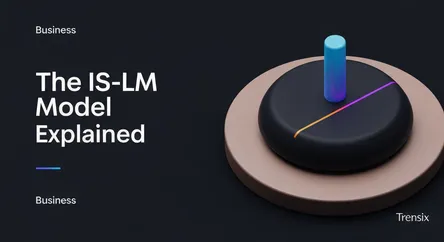Business
The IS-LM Model Explained

Discover the IS-LM model, a key macroeconomic tool that shows how interest rates and output interact in the goods and money markets.
What is it?
The IS-LM model is a cornerstone of Keynesian macroeconomics that graphically illustrates the relationship between interest rates and real output. The "IS" (Investment-Saving) curve represents all combinations of interest rates and output where the goods market is in equilibrium. The "LM" (Liquidity preference-Money supply) curve represents the same for the money market. Where the two curves intersect, the model shows the short-run equilibrium point for both markets, and thus the economy as a whole, providing a snapshot of economic activity.
Why is it trending?
The model remains a fundamental tool for analyzing fiscal and monetary policy. When policymakers debate fiscal stimulus (like tax cuts or government spending) or central banks consider changing interest rates, the IS-LM framework is used to forecast the effects. It helps visualize how fiscal policy shifts the IS curve and monetary policy shifts the LM curve, offering a clear framework for understanding how these actions can be used to combat recessions or control inflation by influencing aggregate demand, output, and interest rates.
How does it affect people?
Decisions analyzed with the IS-LM model directly impact personal finances and the job market. For example, a government stimulus package (shifting the IS curve right) could lead to job creation but may also raise interest rates, making loans more expensive. Conversely, a central bank interest rate cut (shifting the LM curve right) lowers the cost of mortgages and car loans, encouraging spending and investment. This framework helps explain how macroeconomic policies translate into tangible effects on employment, income, and the cost of living for everyone.